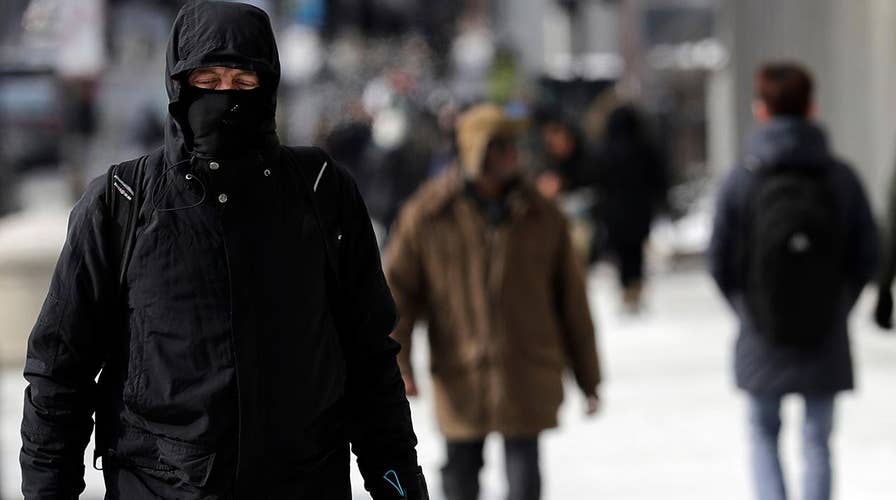Frostbite becomes a concern as cold weather sweeps the nation
Doctor in Minneapolis sees uptick in cases of frostbite as temperatures plummet.
A bitter cold spell is sweeping across much of the U.S., leaving many with serious concerns for their health and safety. Frostbite, in particular, is plaguing those who have to brave the outdoors in freezing weather.
Health officials frequently warn those who have to travel in subzero temperatures, especially for any significant period of time, to bundle up. Your fingers, toes, nose and ears are especially vulnerable to frostbite in this weather, so be sure to wear thick socks, a hat, scarf and gloves.
FLU SYMPTOMS AND PREVENTION: WHAT YOU NEED TO KNOW
"Frostbite occurs when skin and underlying tissues freeze. The most common cause of frostbite is exposure to cold-weather conditions," the Mayo Clinic explains. "But it can also be caused by direct contact with ice, frozen metal or very cold liquids"
Here are some commonly asked questions about frostbite, and what you can do to prevent it.
At what temperature can you get frostbite?
You can develop frostbite if the temperature falls below 32℉, according to LiveScience. But it's wind chill that can really speed things up.
"It takes a wind chill temperature of around minus 15 degrees [F] where you start to see an increase in the incident of frostbite," John Castellani, who works with the U.S. Army Research Institute of Environmental Medicine, previously told the site.
Frostbite can occur "in a matter of minutes" if the wind chill is dangerously low and skin is exposed.
COLORADO REPORTS STATE'S FIRST PEDIATRIC FLU DEATH OF SEASON
"Frostbite happens when the body's survival mechanisms kick in during extremely cold weather," the National Weather Service states in a blog post. "To protect the vital inner organs, the body cuts circulation to your extremities: feet, hands, nose, etc., which eventually freeze."
If the wind chill is -50℉ or below, officials recommend staying inside.
The risk of frostbite increases at -5℉ with low wind speeds. In a wind chill around -17℉, frostbite can occur in 30 minutes or less, according to the Mayo Clinic.
How to prevent frostbite
Frostbite can be avoided if you're prepared for extreme weather.
Dressing in layers, limiting your time outside and monitoring for any signs of the serious condition are simple ways to avoid getting frostbite.
The Mayo Clinic also suggests carrying emergency supplies, including pocket warmers or warm clothing, in case you find yourself stranded in cold weather. Also making sure you're staying hydrated, eating proper meals and staying active to keep your blood flowing is key.
Signs and symptoms
There are several signs of frostbite to be aware of. Symptoms, according to the Mayo Clinic, include:
- Prickly, burning sensation followed by numbness
- Skin color change: red, white, blue or a pale white-yellow tones
- Waxy or tough-looking skin
- Stiffness in joints or muscles
- In severe cases, blistering can occur and skin can turn black
"If you experience symptoms of frostbite, try to gradually bring feeling back into the body. Never rub frostbitten skin or submerge your hands or feet directly into hot water; use warm water or a warm washcloth instead," the American Academy of Dermatology recommends.
CLICK HERE TO GET THE FOX NEWS APP
Anyone who notices more serious signs of frostbite should go to the emergency room as soon as possible, as it can result in permanent damage.
Fox News' Travis Fedschun and The Associated Press contributed to this report.


